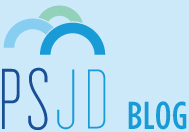Is Mandatory Pro Bono in the Queue as a Solution to our Access-to-Justice Crisis?
When it comes to taking on our nation’s growing access-to-justice crisis, the Pro Bono Institute’s President and Chief Executive Officer Esther Lardent is not willing to wait around for a solution to conveniently present itself, especially because she has sensed apathy outside the legal profession.
In a recent National Law Journal article, she proposed seven bold steps that can alleviate the gap between the need for legal assistance and the availability of free legal services for the poor (teaser: one is mandatory pro bono hours for law students, gasp!).
Lardent contends that the situation is now dire because of the “Great Recession” and budget cuts for legal services organizations and courts across the country. For Lardent, the last resort should be mandating pro bono service for attorneys. However, she has other interesting options. Here’s a quick rundown of her proposals:
1. Voluntary-plus pro bono. Assume all attorneys are willing to take on pro bono cases. Allow uninterested attorneys to opt out of the program, instead of recruiting individual attorneys.
2. Law student pro bono. In contrast to her prescription for attorneys, Lardent suggests law students be required to complete 150 hours of pro bono hours to graduate. She emphasized the value in awakening an appetite for pro bono work and engaging in a hands-on legal experience for students.
3. Pro bono as a criterion for leadership. Attorneys should have a consistent portfolio of pro bono work before becoming eligible for any leadership position.
4. Revise ABA Model Rule 6.1 (the volunteer pro bono publico provision). Rule 6.1 is too broad for Lardent. The definition of pro bono should be narrowed, and should only mean free legal work for low-income or disadvantaged clients (fun fact: Lardent co-authored Rule 6.1 in the 1990s).
5. Bar association contributions. These associations should actively support local legal services programs, financially and on the legislative front.
6. Make pro bono reporting meaningful. Put procedures in place so that accuracy, consistency, disaggregation and transparency are reflected in annual reporting.
7. Triage and simplification. Come up with an effective triage system that would include effectively diagnosing a client’s legal issues and treating them with the “best and least costly legal intervention.” This could include brief advice, education, unbundled assistance or full-fledged zealous representation.
Check out the article in its entirety here. To learn more about Esther Lardent, read her bio here.
What do you think? Do these seem like viable solutions to access-to-justice issues?













